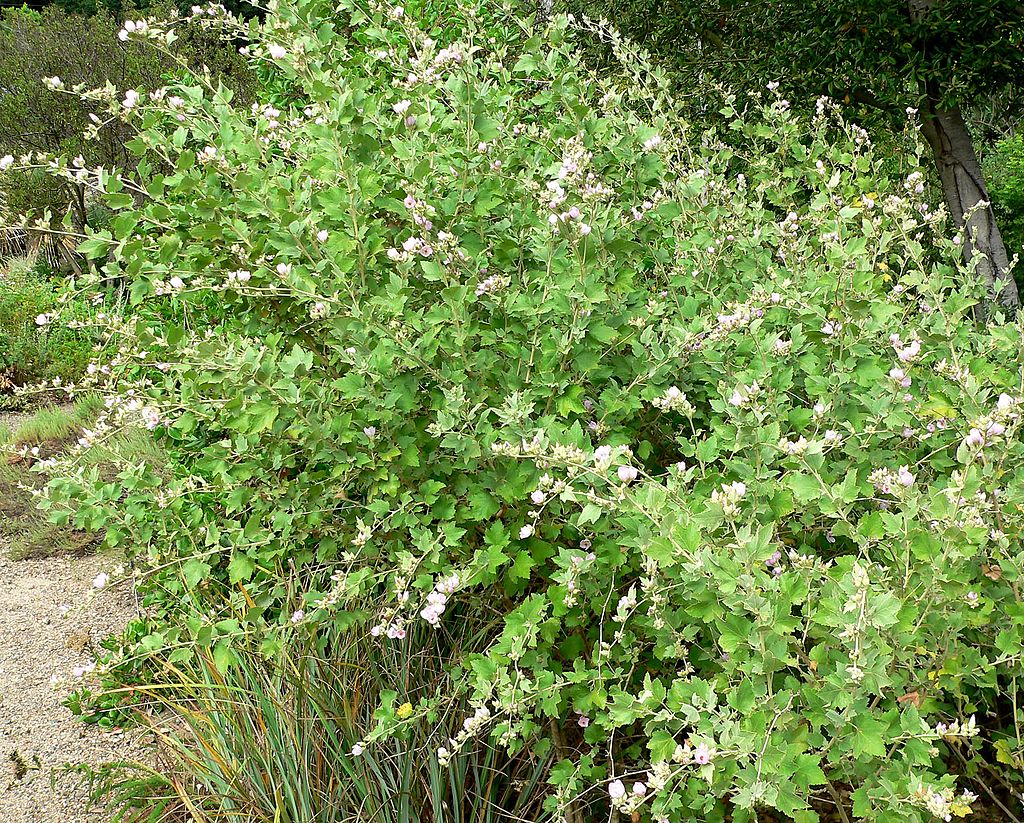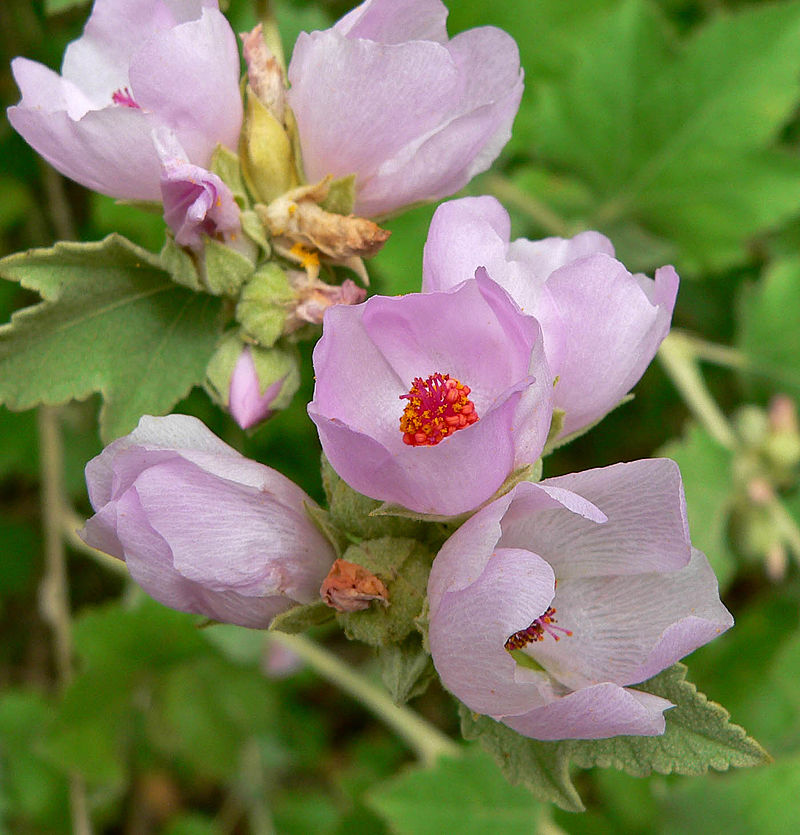
Also called Mendocino bushmallow, this evergreen shrub is native to Sonora, Mexico, northern Baja California, and California where it is associated with chaparral and sage scrub vegetation and is especially prevalent after disturbances, including fires. It is a member of the mallow family, Malvaceae, that also includes hollyhock, cotton and okra. The shrub grows 3-16′ tall and is densely covered with short, stiff, whitish hairs. It has slim, sparsely branched stems that may be upright or arch upward. The oval to rounded leaves are up to 2 3/4″ long, have irregularly toothed margins, and are sometimes shallowly palmately lobed with 3-5 lobes. In summer, an abundance of elongated clusters of 3-7 whorled flowers appear. Each flower is about 1′ across and has 5 pale pink petals, numerous maroon to red-orange anthers, and yellow pollen. The flowers are attractive to hummingbirds and butterflies and give way to a disk-shaped capsule containing several dark, triangular seeds. With an extensive root system, the plant may from a dense thicket and is valued for erosion control. Four varieties have been identified that differ most significantly in geographic location. The genus name, Malacothamnus, comes from the Greek malakos, meaning soft, and thamnos, meaning shrub. The specific epithet, fasciculatus, is from the Latin word, fasciculus, meaning small bundle. Photo Credit Stan Shebs Wikimedia Commons

Type: Evergreen shrub
Outstanding Feature: Flowers
Form: Rounded
Growth Rate: Rapid
Bloom: Clusters of pale pink flowers with maroon to red-orange anthers and yellow pollen in summer
Size: 3.3 – 16.4′ H x 10′ W
Light: Full sun to partial shade
Soil: Sandy, dry to medium moist, well-drained
Hardiness: Zones 6-10
Care: prune to encourage compact growth
Pests and Diseases: None of significance
Propagation: Seed, cuttings
Outstanding Selections: Four varieties have been identified that differ most significantly in geographic location.
Photo Credit: Stan Shebs Wikimedia Commons